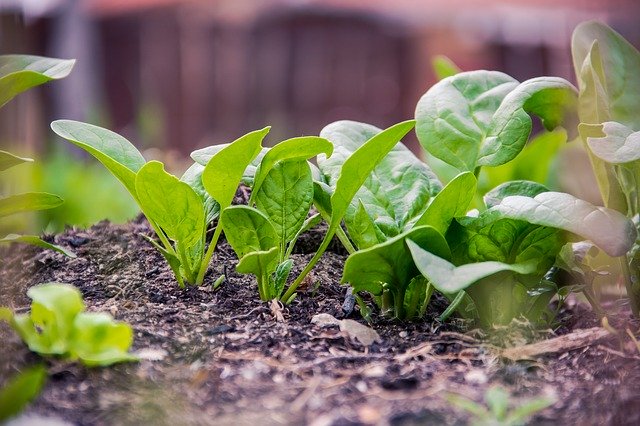Spinach is a leafy green that is easy to grow and very nutritious if grown organically.

If you enjoy eating spinach, there is one well documented reason to grow your own. That is because spinach retains much of the chemicals it is exposed to as it grows, such as fertilisers and pesticides. So, shop bought spinach can contain some residual chemicals within the leaves, unless it is labelled as organic.
There are two types of spinach plant, some are sown in springtime and some are sown in autumn.
Sowing Spinach Seeds Outside
Sow summer varieties of spinach seeds outside in March to June. Winter varieties of spinach are sown in August and September. You can stagger the sowing to create a continuous supply of spinach
For summer varieties, choose a position that is in partial shade. Winter varieties benefit from a sunny position.
Spinach requires a free-draining, fertile soil that has a loose texture. So to grow spinach successfully, you first need to prepare the soil. Dig it over well and add some well-rotted manure or garden compost. Work the soil until it is a fine tilth. This will help the seeds to get a good start.
Prepare a seed drill that is approximately half an inch deep, or refer to the sowing instruction on the seed packet. Sow the seeds thinly, to reduce the need for thinning out later. Cover lightly with soil and water with a fine rose watering can, so the seeds are not disturbed.

As the seedlings grow, they will need thinning out. Don’t waste the thinnings! Eat them in salads or add them to cooked dishes.
Grow Spinach in Pots
You can grow spinach in pots and containers, and this is a way of saving space in smaller gardens. Sow spinach seeds in springtime.
Choose a pot that has a decent depth, and fill will a good quality compost. Sow thinly and water well. As with growing spinach outside, they will need thinning out.
Caring for Spinach Plants
Slugs and snails like to eat spinach seedlings, so protect your plants. Avoid chemicals unless you want to end up eating them yourself! There are effective methods of natural pest control you can try, and once your spinach plants are well established, slugs and snails shouldn’t post too much of a problem.
Keep the soil weed free and water well in dry conditions.
Spinach grown in containers will need extra watering as containers dry out more quickly.
Winter varieties of spinach will need protection from cold weather from October onwards. Wrap plants in a horticultural fleece or use a cloche to protect from frost.
Harvesting Spinach
Spring sown spinach is ready for harvest whenever the leaves are large enough to be worthwhile eating.
Spinach is best when fresh, or it can be frozen to use later.
